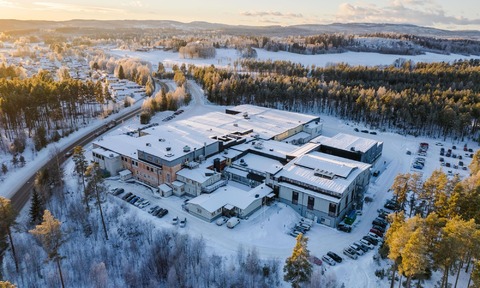Case study: New cleanrooms prompt search for better monitoring system
11 Jan 2024

During preparations for the construction of two new cleanroom facilities, NorthX Biologics, a leading Swedish biological drug manufacturer and process developer, reviewed its environmental monitoring and control procedures...
Its existing system was complicated to manage and only applicable to cleanrooms, explained lead validation engineer Dr Fredrik Amlinger Edin; the firm wanted to be able to include product and agent storage facilities such as warehouses and refrigerators.
“Obviously, the management of cleanroom environment forms a critically important component of our GMP - good manufacturing practice,” said Edin.
“We therefore took this opportunity to undertake a review of our existing monitoring systems, because when your only tool is a hammer, there is a danger that every problem you see is a nail, so instead of persisting with our older systems, we explored a wide variety of alternatives.
NorthX cleanrooms have to comply with the strict GMP guidelines provided by EudraLex - Volume 4 - for medicinal products, as laid down in European Commission Directives 91/356/EEC, as amended by Directive 2003/94/EC, and 91/412/EEC.
In addition, the facilities undergo regular audits, so a comprehensive reporting system with real-time alarm capability is vita, added Edin. At the same time reliability and ease of use were vital together with a need to minimise necessary wiring.
After a recommendation Vaisala was asked to demonstrate its viewLinc software, to demonstrate the firm’s continuous monitoring and alarming system offer.
“The viewLinc software made our previous supplier’s system look very old-fashioned, so we were excited by the new capabilities offered,” admitted Edin
The decision was taken to adopt a new Vaisala system, including almost 150 monitoring locations within cleanrooms and associated facilities. This not only addressed NorthX Biologics’ existing requirement for effective temperature, humidity and differential pressure monitoring but offered a range of extra measurments.
Vaisala sales manager Janne Halonen outlined: “At NXBio, we added temperature loggers for freezers and refrigerators, carbon dioxide loggers for incubators, and hydrogen peroxide loggers for monitoring during decontamination.”
A key aspect of viewLinc is an administrative control that compartmentalises the system into user groups, specifying the data which each user group is able to see, and which alarms are allocated to certain users.
“As a result, we are able to tell our staff: ‘If you can see it and you can do it… you are allowed to do it!’” details Halonen.
NorthX Biologics cleanrooms rely upon ‘pressure cascade’ techniques to ensure that the flow of potential contamination runs from clean areas to less clean locations.
For Edin a further advantage is the system’s ability to review periods when nobody has been working in a particular zone – if the pressure cascade has been unaffected it removes the need to reclean.
The bulk of the installation was undertaken in the spring of 2020, with Vaisala undertaking the set-up and qualification. Its data loggers gathered readings every one to five minutes, with data transferred to the NXBio central server. Whenever a new data logger is added to the system, it is automatically identified by an access point, which forwards the data logger’s information to the server. Once accepted in the system, data loggers remain synchronised and store data internally for 30 days;so if data flow is interrupted by a network outage, transfer resumes when the outage is resolved.
The need for networking
The system was stress-tested to identify any communication weaknesses, which resulted in the purchase of a new wireless access point (AP10) to extend the network.
A life cycle maintenance agreement keeps the monitoring system up-to-date for performance and regulation compatibility. A risk-based validation guideline with recommendations on what needs to be retested following an update is also provided. Annual calibration of sensors avoids replacements were sensors sent offsite for calibration.
Concludes Edin: “The hardware is extremely reliable and the software is more feature-rich, more flexible and substantially easier to use than our previous system. The modularity of the system also means that it is simple to add new monitoring points, which is vitally important as the factory continues to grow.”

